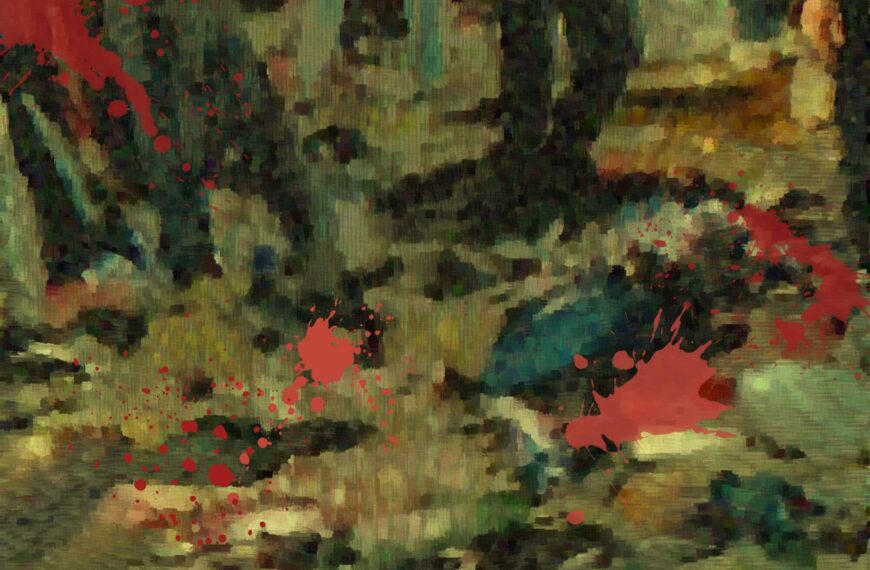Akash explores the Stoneman murders, a brutal series of killings in India from 1985 to 2013, primarily targeting homeless individuals, exclusively for Different Truths.
The Stoneman murders remain one of India’s most enigmatic and unsolved serial killings, spanning nearly three decades from 1985 to 2013. It provides a structured analysis of the killings, examining patterns, possible motivations, geographic dispersion, police investigations, and cultural impact. With no confirmed perpetrator, the killings have given rise to numerous theories, including those involving occult rituals, copycat crimes, and police cover-ups. By exploring these theories and analysing the forensic and psychological aspects of the case, this research aims to highlight the complexities surrounding serial crimes in India.
“We haven’t a clue”
-Rachpal Singh, Deputy Commissioner, Calcutta Police
Serial killings, while a frequent subject of criminological research in the West, remain relatively understudied in India. The Stoneman murders named after the killer’s unique method of bludgeoning victims with a heavy stone represent one of the most confounding serial crime cases in Indian history. The killings first emerged in Bombay (now Mumbai) in 1985, then resurfaced in Calcutta (now Kolkata) in 1989, before appearing sporadically in various Indian cities, including Guwahati, Kolhapur, Pune, and Rajkot.
Despite the repeated pattern of killings, law enforcement agencies have never definitively identified or apprehended the perpetrator. Let’s analyse the Stoneman murders across different cities, evaluating crime patterns, forensic findings, police investigations, media influence, and cultural interpretations.
The Stoneman Murders: Chronology and Geographic Dispersion
Bombay (1985–1987)
The first documented Stoneman killings occurred in Bombay between 1985 and 1987. The victims mostly homeless pavement dwellers were attacked in their sleep, with their skulls crushed by large stones weighing up to 30 kg.
Number of victims: 12
Crime radius: Five km (Sion to King’s Circle)
Modus operandi: Victims were solitary sleepers, attacked between 11 p.m. and 4 a.m.
Police response: Initially dismissed as random murders, the killings only drew serious police attention after the sixth murder. Despite increased surveillance, the killer remained elusive.
Calcutta (1989)
In June 1989, two years after the Bombay killings ceased, a similar pattern of murders began in Calcutta.
Number of victims: 12
Crime radius: Central Calcutta near Howrah Bridge
Modus operandi: Victims were mostly vagrants; some were killed with concrete slabs instead of stones.
Police response: A belated response led to increased patrols and undercover operations, but the killer vanished after the twelfth murder.
Berhampur (1999):
After a decade-long gap, a spate of similar killings erupted in Berhampur, Odisha.
Number of victims: Six
Crime radius: Near Satyasai temple
Suspect apprehended: Maheshwar Padhi, a paan shop owner who attempted a copycat version of the Stoneman murders. He was later re-arrested after escaping police custody.
Guwahati (2009–2010):
The killings resurfaced in Guwahati in 2009, echoing the Bombay and Calcutta cases.
Number of victims: 11
Crime radius: Paltan Bazaar and surrounding areas
Police response: Arrested Krishna Timung, a drug addict, who allegedly confessed, though doubts about his involvement persisted.
Kolhapur (2013):
The killings made a shocking reappearance in Kolhapur in 2013.
Number of victims: 10
Crime radius: Various locations across the city.
Police response: Arrested a 35-year-old man who later confessed, though his connection to earlier cases remained unverified.
Investigative Challenges and Theories
Lack of Forensic Evidence:
Hgfd432 of the most baffling aspects of the Stoneman murders is the complete absence of forensic evidence. No fingerprints were found on the stones used as weapons, and the killer left no other physical traces. This led to various theories, including:
The occult theory: Some speculated that the killings were ritualistic human sacrifices. The murders frequently occurred on Tuesdays and Saturdays—days associated with Hindu deities Mangal (Mars) and Shani (Saturn), linked to black magic in folklore.
The police insider theory: The 2009 film The Stoneman Murders proposed that the Bombay killer was a rogue police constable who knew how to evade detection.
The multiple killers’ theory: Given the vast geographical spread and the decades-long gap between murders, many believe that the Stoneman was not a single individual but multiple copycats inspired by the original killings.
Media Influence and Public Panic:
As the killings continued, newspapers and television channels sensationalized the events, fuelling public fear. In Calcutta, the term “Stoneman” was coined to replace the Hindi Paththar-Maar, adding to the mystery and horror surrounding the case.
Effect on society: Pavement dwellers formed vigilante groups; people avoided travelling alone at night.
Police response: In Bombay and Calcutta, officers disguised themselves as homeless individuals to lure the killer. These efforts proved futile.
Psychological Profile of the Stoneman:
Criminal psychologists have attempted to create a profile of the killer based on available data:
Possible motives: The killings do not appear to be driven by financial gain or personal vendettas. Instead, they exhibit traits of a psychopathic serial killer who derives pleasure from the act itself.
Choice of victims: The homeless were ideal targets due to their vulnerability and lack of police attention.
Patterns of attack: The killer demonstrated immense physical strength and a methodical approach, suggesting an individual with prior experience in handling heavy objects.
Comparative Analysis with Global Serial Killers
The Stoneman case bears similarities to other serial murder cases worldwide, such as:
Jack the Ripper (London, 1888): Both cases involved an unidentified serial killer targeting a specific social class.
The Axeman of New Orleans (1918–1919): Similar unpredictability in choosing victims and long gaps between murders.
The Cleveland Torso Murderer (1935–1938): Like the Stoneman, this killer targeted marginalised victims, leaving no traceable evidence.
Theories Regarding the Stoneman’s Disappearance
Death or Incarceration:
If the original Stoneman was a single individual, he may have died or been imprisoned for an unrelated crime.
Cult Activity:
Some believe the killings were part of an underground cult practising ritualistic human sacrifice, explaining the long gaps between murders.
Copycat Killers:
It is highly plausible that the Stoneman murders were committed by different individuals at different times, mimicking the original crimes.
Conclusion
Despite decades of investigation, the identity of the Stoneman remains a mystery. The case reflects broader issues within India’s law enforcement, including lack of forensic expertise, inefficiencies in crime tracking, and societal biases against marginalised communities.
The Stoneman murders continue to be a chilling reminder of the vulnerabilities within urban spaces and the limitations of criminal investigations. Whether the original killer is still alive or not, his legacy of terror continues to haunt the annals of India’s crime history.
References
1. Mark Fineman, ‘A Calcutta Murderer Slinks from Depths of Depravity’, Los Angles Times.
2. The Stoneman Murders, directed by Manish Gupta.
3. Rudyard Kipling, ‘The City of Dreadful Night’.
4. ‘Gadget Helps Orissa Police Nab Stoneman’, Telegraph, 4th January, 2000
Picture design by Anumita Roy
#StonemanKiller #UnsolvedMysteries #TrueCrimeDocumentary #ColdCase #IndianCrime #Mystery






 By
By
 By
By

Excellent
What a notorious cas it was…
What a notorious case it was…